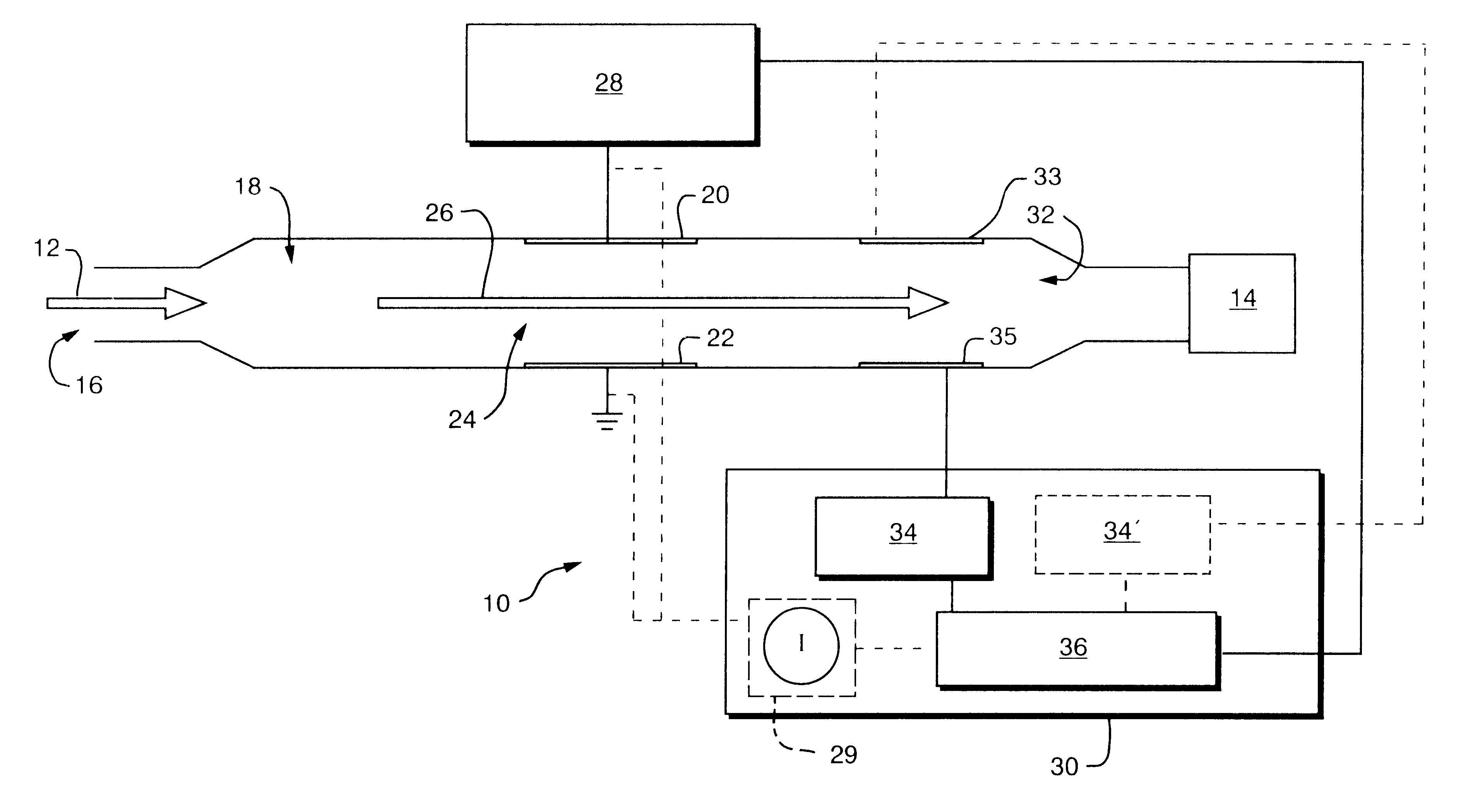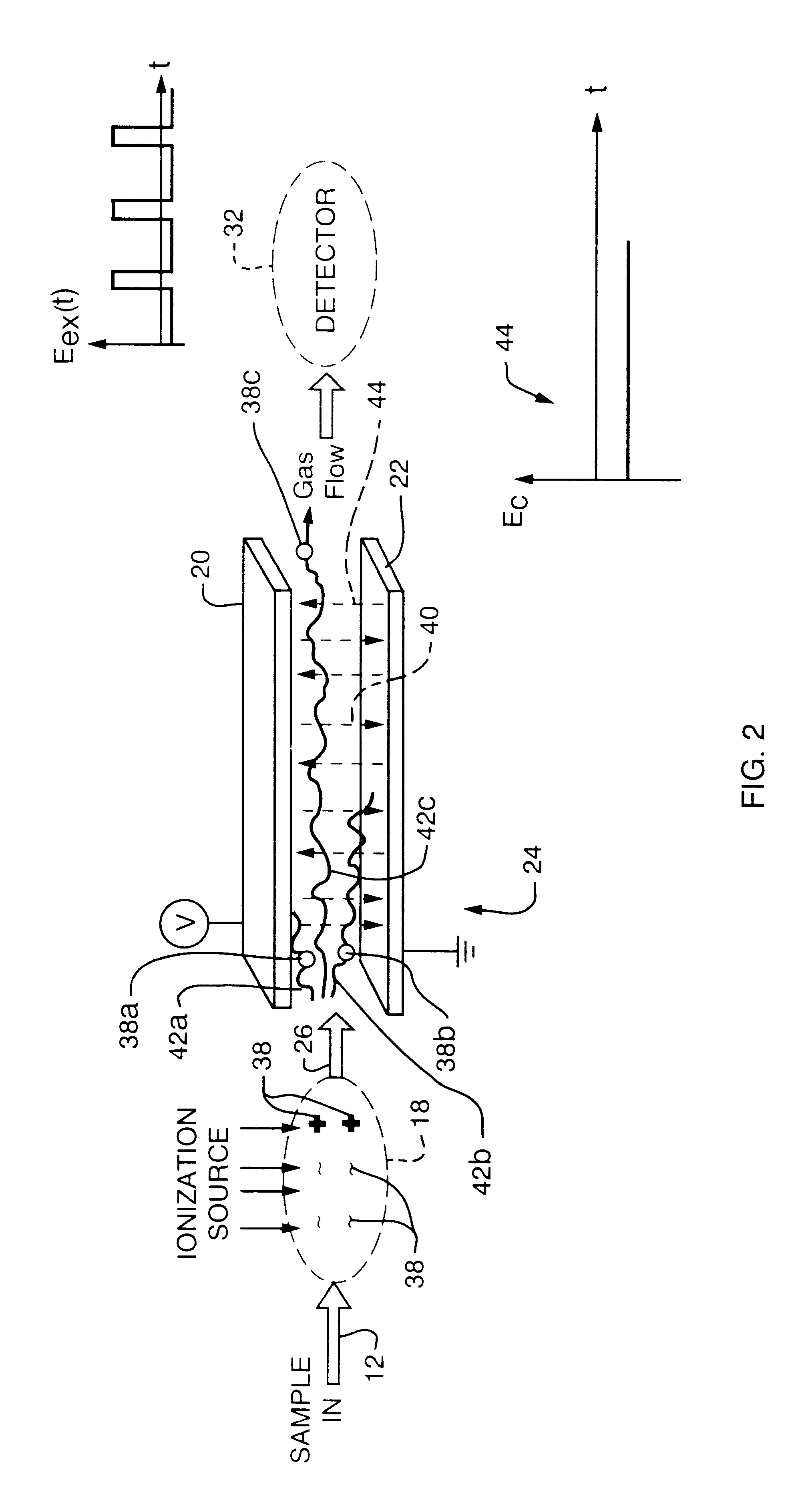Longitudinal field driven field asymmetric ion mobility filter and detection system
a technology of asymmetric ion mobility and filter, applied in the direction of particle separator tube details, instruments, separation processes, etc., can solve the problems of large mass spectrometers, significant power to operate, and insufficient molecular species identification. the identification is not as conclusive and accurate as the mass spectrometer
- Summary
- Abstract
- Description
- Claims
- Application Information
AI Technical Summary
Benefits of technology
Problems solved by technology
Method used
Image
Examples
Embodiment Construction
FAIM spectrometer 10, FIG. 1, operates by drawing a gas, indicated by arrow 12, via pump 14, through inlet 16 into ionization region 18. The ionized gas is passed between parallel electrode plates 20 and 22, which comprise ion filter 24, following flow path 26. As the gas ions pass between plates 20 and 22, they are exposed to an electric field between electrode plates 20 and 22 induced by a voltage applied to the plates by voltage generator 28 in response to electronic controller 30. The electric field produced preferably is asymmetric and oscillates in time.
As ions pass through filter 24, some are neutralized by plates 20 and 22 while others pass through and are sensed by detector 32. Detector 32 includes a top electrode 33 at a predetermined voltage and a bottom electrode 35, typically at ground. Top electrode 33 deflects ions downward to electrode 35. However, either electrode may detect ions depending on the ion and the voltage applied to the electrodes. Moreover, multiple ions...
PUM
| Property | Measurement | Unit |
|---|---|---|
| length | aaaaa | aaaaa |
| bias voltage | aaaaa | aaaaa |
| bias voltage | aaaaa | aaaaa |
Abstract
Description
Claims
Application Information
 Login to View More
Login to View More - R&D
- Intellectual Property
- Life Sciences
- Materials
- Tech Scout
- Unparalleled Data Quality
- Higher Quality Content
- 60% Fewer Hallucinations
Browse by: Latest US Patents, China's latest patents, Technical Efficacy Thesaurus, Application Domain, Technology Topic, Popular Technical Reports.
© 2025 PatSnap. All rights reserved.Legal|Privacy policy|Modern Slavery Act Transparency Statement|Sitemap|About US| Contact US: help@patsnap.com



